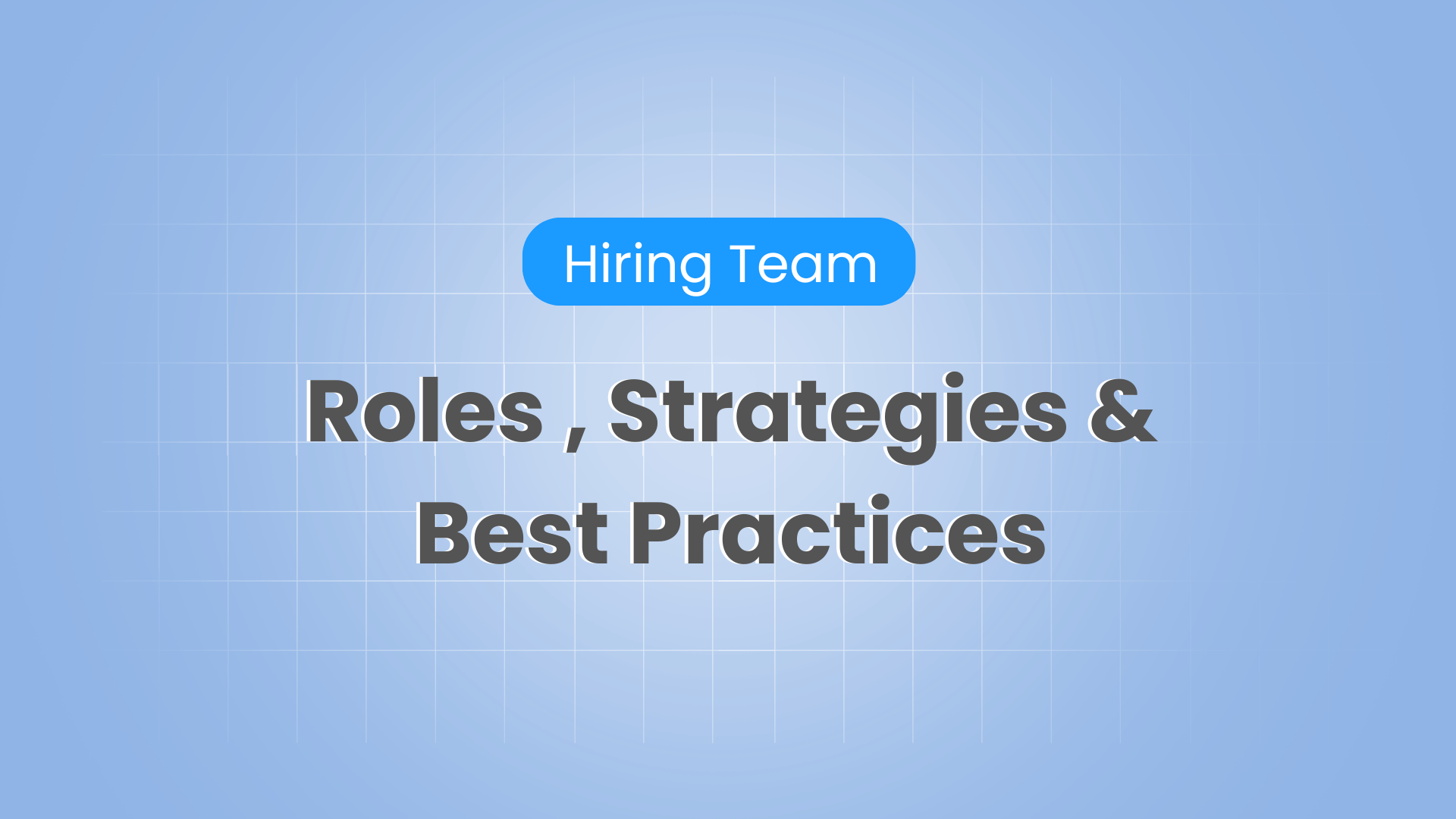Understanding Hiring Team Structures: Roles, Strategies, and Best Practices



Ever wondered who’s responsible for orchestrating the hiring process, from job postings to final offers? Enter the hiring team—a dynamic group of professionals dedicated to finding, assessing, and securing top talent.
From in-house recruiters to external hiring partners, the recruitment ecosystem involves a strategic blend of sourcing, interviewing, and decision-making. But who exactly makes up a hiring team, and how do external partners contribute? Let’s explore the intricacies of hiring team structures and the role of recruitment partnerships in today’s job market.
Hiring Team vs. Recruiting Team: Key Distinctions
Hiring teams and recruiting teams are often used interchangeably, but are they truly the same? While both focus on acquiring talent, their composition and scope can differ depending on an organization’s size and hiring strategy.
For instance, at a startup, the “hiring team” may consist of the CEO and an HR generalist managing multiple responsibilities. Meanwhile, large enterprises typically have specialized roles, including:
- Recruitment Manager – The strategist overseeing hiring efforts and external partnerships.
- Recruiters – The professionals responsible for sourcing and guiding candidates through the hiring process.
- Sourcers – Experts in identifying potential candidates, even before they actively seek new opportunities.
- Coordinators – The operational backbone, ensuring seamless scheduling and communication.
While small businesses may consolidate these roles, larger companies distribute responsibilities to enhance efficiency. Regardless of structure, the goal remains the same: identifying and hiring the best talent.
The Role of a Hiring Partner
Hiring partners play a crucial role in supporting recruitment efforts. This term typically refers to external recruitment agencies that assist companies in filling specialized or high-volume roles. However, it can also apply to internal talent partners who work closely with hiring managers to refine recruitment processes.
According to SHRM, organizations benefit from external recruitment agencies when they need to:
- Hire executives or highly specialized professionals.
- Scale recruitment efforts rapidly.
- Access a broader and more diverse talent pool.
While external partners provide valuable expertise, they also come at a cost—typically charging a percentage of a hire’s annual salary. This makes them a strategic yet sometimes expensive solution. Alternatively, internal hiring partners (often called Talent Partners) work within the organization, ensuring recruitment aligns with business goals.
Structuring an Effective Recruiting Team
There is no universal approach to structuring a recruiting team, as organizations tailor their hiring strategies based on workforce demands. Here’s how different companies typically organize their hiring efforts:
Some organizations adopt a hybrid approach, combining internal teams with external hiring partners to maintain flexibility. For example, Talentful offers an embedded recruitment model where external consultants work alongside in-house teams to optimize hiring.
How Internal Teams Collaborate With External Hiring Partners
When companies integrate external hiring partners into their recruitment process, they typically follow a structured approach to maximize efficiency:
- Defining Job Requirements – Internal teams establish clear expectations for the role and ideal candidate profile.
- Selecting Hiring Partners – Companies identify recruitment agencies that specialize in their industry or job function.
- Briefing the Agency – Agencies receive comprehensive job descriptions, company culture insights, and hiring objectives.
- Managing Communication – Recruitment Managers ensure seamless collaboration between internal teams and external agencies.
- Evaluating Outcomes – Success is measured through key performance indicators such as time-to-hire, cost-per-hire, and candidate quality.
According to People Managing People, organizations that effectively balance internal and external hiring efforts improve both efficiency and hiring quality.
Adapting Hiring Strategies for Business Growth
One key insight? Hiring teams should remain adaptable. Companies can scale their recruitment efforts based on hiring demands, leveraging external partners for peak hiring seasons or niche roles. This approach balances cost-effectiveness with operational efficiency.
For example, during periods of rapid expansion, companies like Amazon and Tesla rely on both internal teams and external agencies to manage high-volume hiring efficiently (Shiftbase).
Frequently Asked Questions (FAQs)
1. What is the difference between a hiring team and a recruiting team?
Though often used interchangeably, both refer to professionals involved in talent acquisition. Larger organizations may distinguish between recruiters and broader hiring teams that include hiring managers and executives.
2. What is the role of a hiring partner?
A hiring partner can be an external recruitment agency supporting talent acquisition or an internal talent partner who collaborates with hiring managers to enhance recruitment processes.
3. When should a company consider external hiring partners?
External partners are ideal for executive searches, rapid scaling, or niche talent acquisition. However, they should be used strategically due to associated costs.
4. How can companies optimize their recruiting team structure?
Organizations should assess hiring needs, define clear roles, and incorporate external partners when necessary. A hybrid approach often provides the best balance between cost and efficiency.
Building an Effective Hiring Strategy
Ultimately, successful hiring hinges on a well-structured team, whether internal, external, or a combination of both. The key lies in aligning recruitment strategies with business objectives and maintaining a flexible approach to talent acquisition.
By structuring hiring teams effectively and leveraging external expertise when needed, companies can streamline recruitment, reduce costs, and secure top talent. The next time you land an interview, remember—the process is driven by a team working behind the scenes to connect the right candidates with the right opportunities.

Upgrade now
More insightful resources to help you grow as a recruiter
-min.jpg)
Recruitment tech set for a seismic shift
Amidst the talent war, our traditional processes have proven to become counter-productive.




